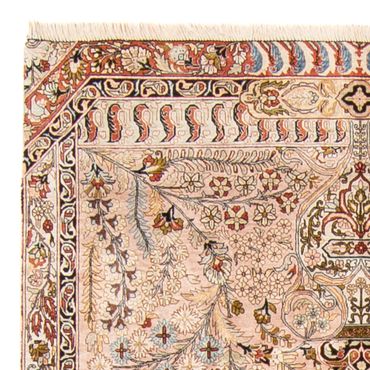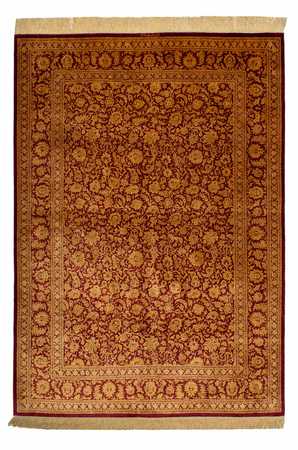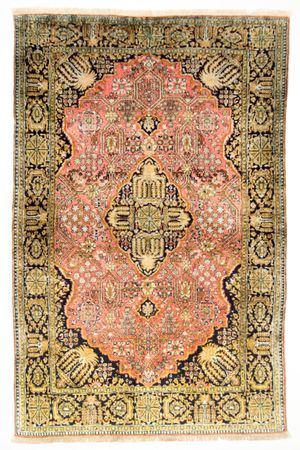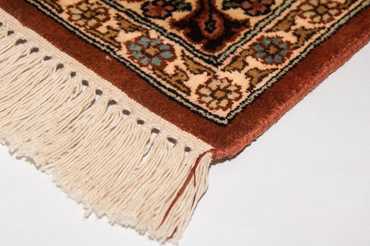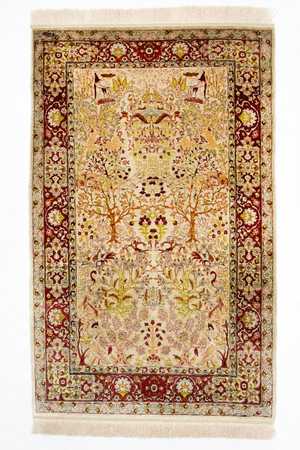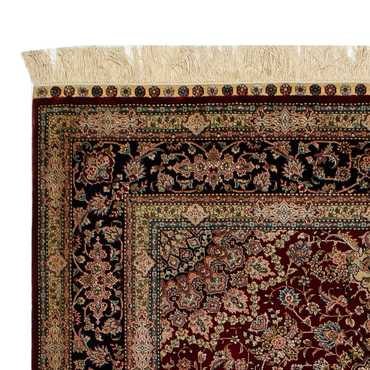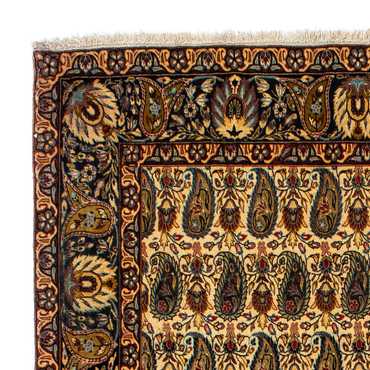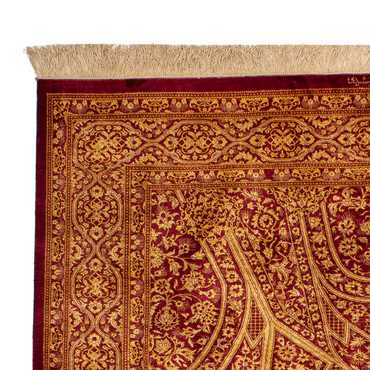- Silk Rug - Kashmir Silk -
194 x 1202,323 US$
-
- Silk Rug - Chinese Silk -
183 x 1226,268 US$
-
- Silk Rug - Ghom Silk - Premium -
216 x 1326,823 US$12,292 US$
-
- Perser Rug - Nain - Premium -
361 x 25223,033 US$
-
- Silk Rug - Kayseri -
169 x 1057,026 US$
-
- Silk Rug - Chinese Silk -
152 x 912,057 US$
-
- Silk Rug - Kashmir Silk -
308 x 2415,963 US$
-
- Silk Rug - Hereke silk - Premium -
150 x 9211,788 US$28,037 US$
-
- Silk Rug - Kashmir Silk -
280 x 1854,880 US$9,237 US$
-
- Silk Rug - Kashmir Silk -
153 x 931,160 US$
-
- Silk Rug - Kashmir Silk -
157 x 901,154 US$2,123 US$
-
- Silk Rug - Chinese Silk -
240 x 1564,250 US$
-
- Silk Rug - Kashmir Silk -
153 x 941,173 US$
-
- Silk Rug - Ghom Silk - Premium -
154 x 1017,376 US$13,955 US$
-
- Silk Rug - Kashmir Silk -
221 x 1583,931 US$
-
- Silk Rug - Chinese Silk -
183 x 1224,798 US$9,270 US$
-
- Silk Rug - Kashmir Silk -
240 x 1573,039 US$
-
- Silk Rug - Kashmir Silk -
332 x 2488,739 US$17,183 US$
-
- Silk Rug - Chinese Silk -
183 x 1226,799 US$
-
- Silk Rug - Kashmir Silk -
94 x 60474 US$
-
- Silk Rug - Kashmir Silk -
169 x 941,049 US$
-
- Silk Rug - Chinese Silk -
149 x 961,702 US$3,864 US$
-
Silk Rugs: Indulge in the Ultimate Luxurious Elegance
A silk rug is a very special piece and an eye-catcher in any home. Its manufacture is based on ancient tradition.
Silk rugs - a short overview
Rugs made of fine natural silk come from Asia and the Orient, they are among the most valuable products of the arts and crafts. The silk used is cashmere, ghom, and China silk. Their processing is believed to have been known for almost 5,000 years. It boosted the economy, as evidenced by the famous Silk Road. To this day, rugs made of natural silk are considered a luxury, which is due to their production and the complex silk extraction process: butterfly caterpillars produce them for their own cocoons, and the extraction process is complicated.
Pure silk is a natural material that creates excitement and fascination like no other. It is soft, light, and elegant. It reflects the light and creates a noble shine. A hand-knotted silk rug is therefore a particularly valuable piece of handicraft with high value. To this day, rugs made of the finest Kashmir or Ghom silk have lost none of their fascinations. A Chinese silk rug is also always popular. They are still considered luxury goods, the quality of which can be seen at first glance.
The number of knots per square meter corresponds to the value and fineness of the material to be processed. Silk rugs are almost exclusively made in very high knotting densities. As a rule, by experienced and particularly talented weavers. The fine nature of the silk thread allows up to 1,000,000 knots per square meter. However, much higher knotting densities are possible with pure silk rugs. With 25 times 25 knots per square centimeter (!), however, the maximum possible density is reached. This corresponds to an incredible 6,000,000 knots per square meter.
From the silkworm to the noble rug
It all begins with the silkworm. After mating, the female lays up to 400 eggs. The caterpillars hatch and feed exclusively on the leaves of the mulberry tree. A month later, they begin to spin a cocoon around themselves. However, these breeding caterpillars will never hatch because their cocoon is too valuable. Up to 20 of these cocoons are unwound at the same time and processed into a single strand. Now the raw silk can be sold.
When making a rug, silk is used in many different ways. For example, it can be used to set visual accents. Then only certain pattern areas are knotted from pure silk to achieve stylish effects. Other rugs have only a silk pile, while the warp and weft are made of a different material. Only pure silk rugs have warp, weft, and pile made of real silk.
What are the characteristics of silk rugs?
The fineness and simultaneous robustness of the material, as well as the special color schemes, make these rugs so unique. They come in soft pastel shades, natural colors, and in very strong colors, which allows strong color accents. Their longevity is legendary. They are inherited, and a hundred years of use is not uncommon. In addition, their high knot density further supports the properties (resilience and color brilliance). Particularly noble rugs made of silk bear a signature, which is called the Turkish or Persian knotting manufacture.
A hand-knotted silk rug - exquisite, valuable, and exceptionally elegant
Rugs made of silk are not only considered exquisite and elegant, they also look like it at first sight. Those who own such rugs are regularly asked about them by their visitors. Since they are hand-knotted, they are always unique. Their coloring is unique, and the quality is absolutely first-class. Any room thus acquires an inimitable ambiance. Often silk rugs hang on the wall, where they are a strong eye-catcher, but they may also be walked on: Their resilience gives that. They can also be maintained with mild agents. After all, fashion made of silk is also washed. Lovers choose between the Turkish Hereke, the Indian Ghom, and the Chinese silk rug.
Rugs in the size and color you want.
Silk rugs are available as decorative made-to-measure rugs, which customers can order in a color of their choice and with an individual mix of materials. They do not have to be 100% silk, there are also very interesting blends with wool. Due to the many collections, every taste comes into its own.
Modern designer rugs from silk and wool
Wool is a good admixture to silk because it carries the color. An example is Mischioff's Nalanda Collection. The silk content here is 70%, while in the Tibey Collection it is 50%. The feel and sheen are nevertheless those of pure silk rugs.
Unique silk rugs - the Sichouk Collection
The Sichouk Collection is exceedingly noble and captivates with filigree details. The designers are Sascha and Dani Miso. They were able to combine classic and modern elements into expressive compositions in these rugs.
Silk rugs from different regions of the world
Today, most rugs silk is hand-knotted in China and India, as well as in Turkey (for example, Hereke silk rugs). In addition, Persian rug silk is known for its fine knot density. In India, especially the region of Kashmir is famous for its beautiful Kashmir silk rug, in Turkey it is the cities of Hereke and Kayseri. Also, Persian rug silk bears its origin in the name. Isfahan, Ghom, and Tabriz stand for the high art of rug weaving. Meanwhile, a Chinese silk rug or oriental rug silk is strongly oriented to the patterns of Hereke and Ghom rugs but is - in terms of silk quality and knotting work - at the highest level.
The right care of your silk rug
As precious as silk rugs are, their care is relatively straightforward. Regular vacuuming - at least once a week - removes dust and dirt particles. When doing so, pay particular attention to the direction of the pile, as silk rugs should not be vacuumed against the grain if possible. To protect the rug, it is also advisable to turn it every six months. Depending on the shape of the rug and the space, by 90 or 180 degrees. This way, one-sided wear is avoided and your silk rug will stay beautiful for a long time.
For smaller stains, a lint-free wool cloth and warm water for washing are helpful. It is important to remove the stain by blotting and not rubbing. If there are pressure marks, these can also be repaired with a damp cloth. Simply rub it several times in the direction of the stroke over the affected area. In the case of heavier soiling, a professional cleaning will help your rug regain its shine.
The right place for your silk rug
Silk rugs have been fashionable for years and are becoming more and more popular and are always in style. Their high-quality workmanship and the exclusivity of the processed material make them a stylish and extremely precious home accessory - whether in large or small size. Silk rugs are capable of setting noble accents in the most diverse living and furnishing styles, both as wall hangings and on the floor. Their colors are brilliant, their material shimmers softly and their softness can be felt with every step. Hand-knotted and of the finest quality, they delight connoisseurs and aficionados alike, filling any room with a touch of luxury.
A hand-knotted silk rug modern is craftsmanship at the very highest level. The finest materials and high knotting densities give it incomparable quality, comfort, and elegance. Our assortment offers you a wide range of silk rugs from different regions of the world. And in many shapes, sizes, and colors. We will be happy to answer all your questions and advise you in detail on the way to your shiny work of art made of the purest silk.



